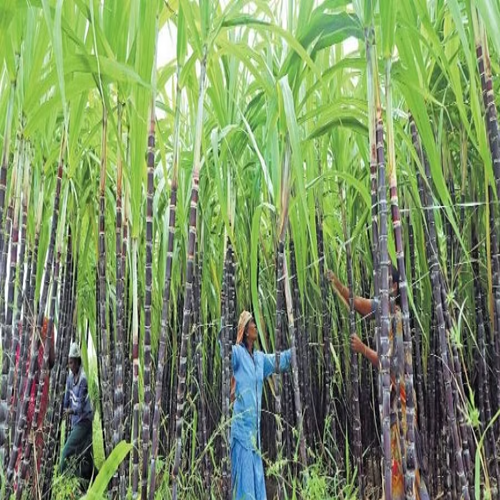Sweet story with bitter chapters

KOCHI: Though there’s something to appreciate in every culinary category, our taste palate has a special fondness for sweet things. For many, munching on sweets after a meal is more or less like an obligation.
Maybe it’s that sugar rush feeling which boosts the ‘feel-good’ brain chemicals that make one want to experience the pleasure of all things sweet over and over again.
The white crystal sugar that we see now in abundance was once a treasure trove. In the 16th century, it was called the ‘white gold,’ a rare commodity used by the wealthy. Therefore, back then, sugarcane was the most important crop in the world.
Until the Middle Ages, people used fruits or honey as sweetners. Though sugarcane was found in the South Pacific even centuries before, it was farmed in New Guinea when its value was recognised. Soon, the goodness of sugarcane was spread by travellers.
By the 13th century, the Middle East also began to grow the crop widely. Subsequently, the Venetians took it to Europe, primarily for the royalty. Due to its rarity, in the early modern period, sugar was a symbol of status, more like an art form. There are records of detailed sugar sculptures, around 4-6 ft tall, adorning the tables of wealthy people.
Sugarcane and the production of sugar do not have a sweet history. In fact, this was one of the commodities that fueled slavery. According to experts, sugar was the most dominant economic incentive for European colonisation of the Americas. In 1493, Christopher Colombus brought some cane stalks by way of the Spanish Canary Islands, it was after this, that the idea of turning sugar into a commodity in bulk form came.
However, extracting sugar from sugarcane stalks involved arduous work. This fuelled slavery from Brazil up to Louisiana as numerous sugar plantations were established. By the 19th century, Louisiana was producing about a quarter of the world’s cane sugar. Enslavement of people of African descent became rampant, a bitter chapter in human history.
Over time, countless indigenous lives were destroyed and over a crore Africans were enslaved for the production of sugar. Some sugarcane stalks are almost 20 feet tall and the leaves are surprisingly sharp as they can even slice your skin right open.
The cane stalks get spoiled quickly, within a day or two after sugar juice is oozed out. The labourers had to rush to the refining stations, which operated round the clock. Fatal injuries happened during the time of extraction as big wooden rollers were used to crush the stalks for the juice.
Alongside adults, children also toiled like factory workers in open furnaces, rollers, etc. The back-breaking labour and lack of nutrition, made the slaves working on sugar plantations difficult to resist life-threatening diseases when compared to other working-age slaves.
As the price of sugarcane rose in the 1800s, people started looking for alternatives. One was sugar beets, which can grow in cold climates. This is when Nazis came into the picture; they invested a lot of money into subsidising Germany’s sugar beet industry.
The Nazi obsession with sugar also came from the leftover products after sugar beets are extracted. One side product was the slimy schlampe. When heated in a closed vessel, it would produce cyanide. And, in the early 1940s, the Nazis were quite known for their cyanide!
Sugarcane and India
Sugarcane was discovered in India in the 4-5th century era. In ayurvedic texts dating back to the fifth century, sugar is mentioned as a medicinal ingredient. Sugar was a vital export from India. Considering it a high-energy food, Buddhist monks used to carry loads to China and other South Asian countries.
Fascinated by it, the Chinese mastered the crystallisation process.
According to legend, during the 17th century, Chinese explorer and trader Tong Atchew set up a sugar refinery in a village near Calcutta. The place was named after him, and is now known as Achipur.
There are records that show sugarcane had strong roots in India. Roman historians, including Pliny the First, noted Indian sugar was superior to that from Arabia. Hordes of Indians were also transported to the Caribbean to work in plantations.
Healthy notes
- Good source of Vitamin C and antioxidants
- Highly fibrous, aiding digestion and liver health
- Rich in calcium, promoting strong bones and teeth
- Controls acne, prevents premature ageing, and dark spots
- Regulates blood sugar in moderation
- Boosts metabolism, aiding weight loss
- Provides relief from menstrual cramps
- Energy booster, maintaining electrolyte balance due to its alkaline nature
- Strengthens the liver, used in native remedies to treat jaundice
Sugarcane-cucumber cocktail
Ingredients
- Cucumber juice: 2 oz
- Sugarcane juice: 1 oz
- Rum: 1 oz
- White Rum: 1 oz
- Fresh lime juice: 1 oz
- Ginger juice: 1 tsp
Method
Fill a cocktail shaker with ice, and add cucumber juice, sugarcane juice, rum, fresh lime juice, and ginger juice. Add fresh ice to an old-fashioned glass, strain the cocktail into it, and serve
Sugarcane kheer
Ingredients
- Sugarcane juice: 4 cups
- Short grain rice: ½ cup (soaked for 30 minutes and drained)
- Green cardamoms: 5
- Raisins: 10-12
- Saffron: A pinch
- Almonds: 8 (blanched, peeled and chopped)
Method: Add rice and sugarcane juice into a pan. Mix in medium heat. Crush green cardamoms and add to pan along with raisins and a pinch of saffron strands. Mix and cook till mixture boils. Cover and cook for 5 minutes. Remove the lid, stir and cook on medium heat till rice is done and mixture thickens. Serve hot after garnishing with chopped almonds.
Braised pork belly in sugarcane
Ingredients
- Pork belly: 300g
- Sugarcane: 1 (20cm)
- Spring onion: A bunch
- Ginger: 1 (3cm)
- Garlic: 4 cloves
- Chilli: 2 bird-eyed chilli
Sauce to marinate meat - Sugar: 15g
- White wine: 15ml
- Soy sauce: To taste
Sauce to braise - Oyster oil: 43ml
- Sugar: 30g
- White wine: 30 – 45ml
Method
Boil the pork belly for 23 minutes. Add sugar, white wine and soy sauce in a bowl and mix well. Marinate the pork belly with the sauce for a few minutes. Sprinke a little sugar on sugarcane and grill it at 180 celcius for seven minutes. Heat oil on a skillet and fry the pork belly till it turns golden and set it aside. In a pan, fry spring onion, ginger, garlic, chilli and grilled sugarcane. Mix ingredients to make the braised sauce and pour it into pot. Add pork belly and fry until they combine together. Add water and cook in low flame until it boils (almost 1 hour). Flip the pork belly in between. Serve with rice.
Sugarcane with vodka
Ingredients
- Vodka: 45ml
- Sugarcane juice: As per taste
- Cumin seeds: a pinch
- Juice of a lemon (to taste)
- Pink salt: a pinch
- Ice: To serve it chill
Method
Dry roast the cumin seeds, and grind them into a coarse powder. You wouldn’t need more than a pinch of it in the cocktail. Take a glass and line it with pink salt. In a cocktail shaker, add vodka, cumin powder, sugarcane juice, a dash of lemon juice, and crushed ice. Shake it well, and pour into the glass.
















